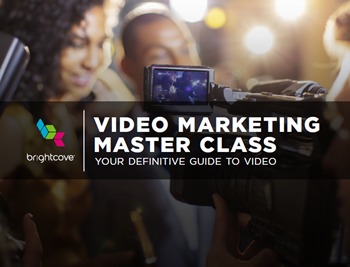By now you’ve probably seen Google Street View – it is over 10 years old, after all - and probably one of the best examples of how 360° media can be used with practical results (and on a massive scale too!)...but did you know it’s actually very easy to create your own 360° media? Thanks to a booming 360° camera trade, the ease and affordability of creating this type of media has massively increased over the last few years as companies from all sectors rush to take advantage of this new technology.
But how could your company make use of 360° media? Here are a few ideas to get started:
- Just given your office a makeover? How about shooting a virtual tour to get people interested and interacting with your brand.
- Put the camera on the production line in your factory and record how your products are created.
- Record an important round table meeting or debate, allowing viewers to get a perspective of what it’s like to be there.
- Don't let those who can't make it to your event miss out. Showcase what’s going on with an interactive video - it may even boost attendance next time.
So how do we go about it? Here's a no-nonsense guide on how to get your audience’s heads spinning (with excitement...)
Step 1: Get the right gear
First things first, we need a camera!
There are plenty of buyer’s guides on the internet, and because it’s changing so rapidly, I would recommend a quick google to see what's top of the pile right now.
If you’re wanting to trial this type of media first, and not commit too much budget up front, then I would recommend the Samsung Gear 360 or Ricoh Theta for around £150
For a step up, consider spending around £300-500 on a camera. For this price, you’d be purchasing at the top end of consumer grade cameras and so it would be money well spent. Some top examples right now would be Insta360 One X, or the slightly more expensive Go Pro Fusion.
It’s possible to spend thousands beyond that - but unless you are a media production company, this might not be that relevant.
On top of this you will need a fairly modern smartphone or tablet to easily control the camera, and then later edit the content. 360° images are often big in file size so a more powerful processor will handle this better.
Lastly, I would really recommend grabbing a monopod - if it has a foot to help it stand, even better - otherwise you (the person holding the camera) will be in every shot.
Step 2: Take your shots
So, now you have your shiny new gadget, let’s get some nice shots! I would recommend just having a play around first and seeing what works.
A few things to think about if you want to take the perfect shot:
- 360° cameras can see all around wherever you place them. It sounds obvious, but those out-of-season Christmas decorations can really confuse the atmosphere of your cool office shot.
- Try and position the camera at natural head height for a person. This is where the monopod with feet comes in. If the camera is roughly at the same height as a person’s head, it’s going to feel much more comfortable – and enjoyable – for those viewing it, especially if they choose to view it via VR headset or something similar. High-up and in-air shots can also work, but I wouldn't go closer than 1 meter to the ground.
- Next, think about how close things are. Try to position everything at least a meter away from the camera, 360° cameras don’t do close ups well, and are more designed to try to capture everything around them in detail rather than one small object.
- Aim for a brightly lit area such as outside in daylight. This is more important with video, but it will certainly help with images. In photography, the more light the better, this is normally solved by using flashes and light boxes, but that doesn't really work with 360° as you would see them in the shot.
- Think about the stitch. Most cameras use two lens and create a stitch line where the two images are combined into one. The software is getting pretty good these days at hiding this line, but try to make sure the cameras are pointing at the important parts of the scene, as things can blur or warp as they meet the stitch line.
- Get out of the shot! Unless you want to be in it, set the camera on a timer or use your smartphone as a remote and hide around a corner!
For some ideas of what to shoot, I always recommend that businesses try to incorporate an experience that takes advantage of the benefits of 360°, rather than just translating existing media into it. Think about carrying your 360° camera with you all day at work and see what interesting sides to your business you can capture!
Step 3: Editing what you’ve got
Once you’ve captured all your great footage, it’s time to edit it and get it out into the world.
Most cameras come with software for editing, and that’s probably the best way to start.
If it hasn't been done already, the first task will be to stitch or process the media into a 360° format. Once you have your stitched footage or images, you can use normal video and image editing workflows to improve the work or assemble sequences if required.
Step 4: Finally, it’s time to share!
It’s important to remember that in order for people to view 360° content, the place where you’re sharing it needs to be able to support it. The good news is most social media platforms now support 360° content, so these are a good place to start. This is also still a very novel experience for most people, and will definitely hold their attention for longer than other forms of media.
When choosing the most appropriate platform, here are a few things to consider:
- YouTube – primarily for video, this platform also supports VR playback, and as you can embed a YouTube video in most other places it’s a great place to start.
- Vimeo – this platform is similar to YouTube
- Facebook – for both images and video. Mobile users will gain more form this experience as the image/video will rotate when they move their device.
- Instagram - IG doesn’t currently support 360° media, but its square format and more arty audience is perfect for “Tiny Planets” - a style of content produced using 360° media as a base.
For some inspiration on how you can use 360° media, take a look at this video:
Access the latest business knowledge in Marketing
Get Access






Comments
Join the conversation...